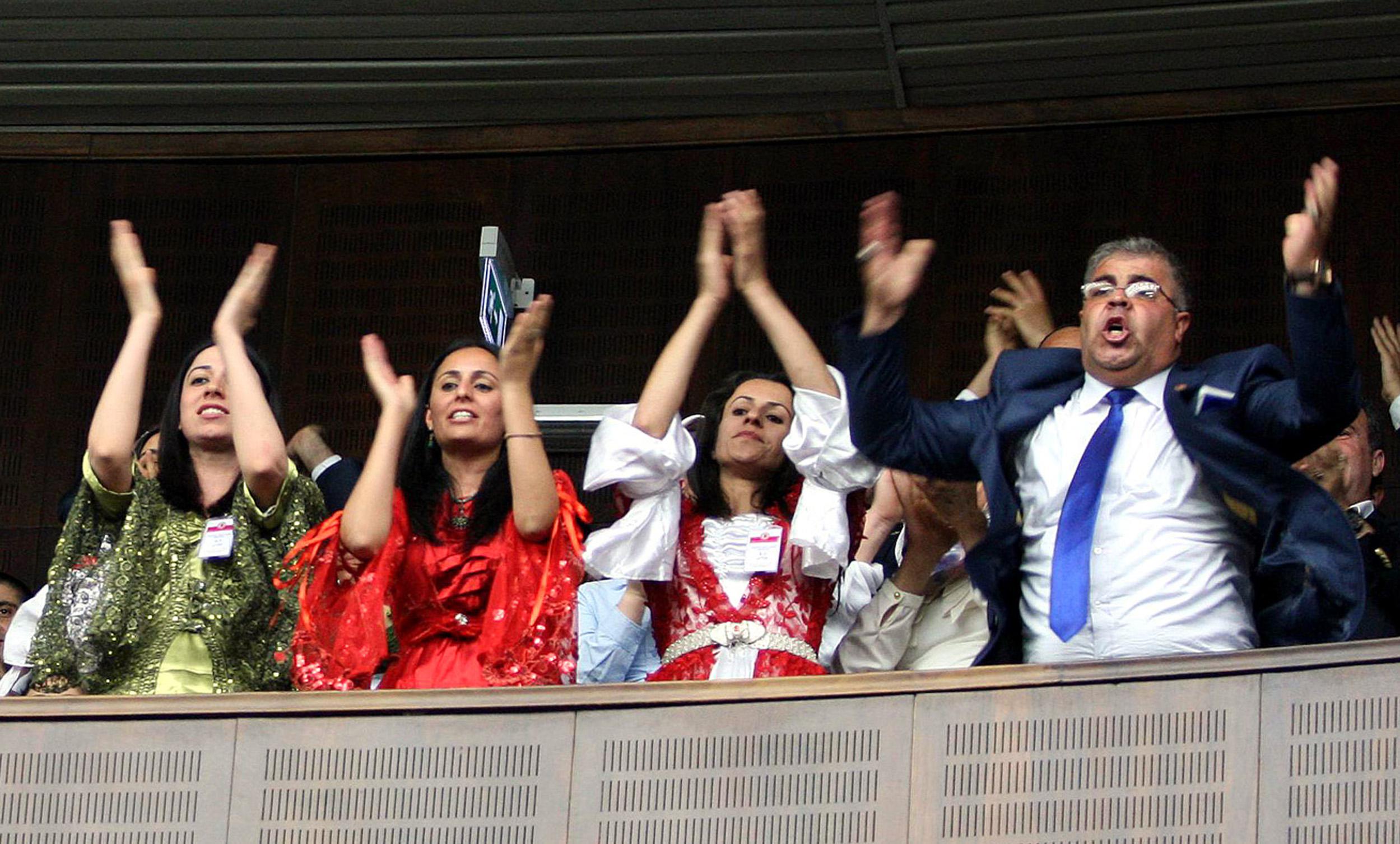What do applause and typhoid fever have in common? They are both contagious—at least, they fan out in ways that can be predicted by contagion theory, a bundle of models and assumptions that can apply to the spread of everything from a hot fashion trend to violence to an infectious disease. According to a paper published today in the Journal of the Royal Society, clapping is far from a straightforward expression of appreciation. It has a mind of its own—like malaria!—and a surprising logic.
Researchers led by Richard P. Mann of Uppsala University in Sweden filmed six different groups of 13 to 20 university students as they watched an academic presentation. The students, who believed they were taking part in a study about body language, had been told that the presenters were speaking voluntarily, and that it would be kind to applaud when the talks concluded. As the researchers then took note of the audience’s clapping behavior—defined, wonderfully, as “the emergence of self-organized rhythmical patterns”—they made a few counterintuitive discoveries.
First, applause duration varied—but not in response to a change in the quality of the lectures. Instead, clapping start and stop times were initially determined by random individuals, who then triggered larger group dynamics as everyone conformed to the example they set. Those group dynamics, in turn, were beguilingly elegant. They didn’t hang on physical proximity—that is, whether your neighbor was clapping or not—nor did they depend on some sort of tipping point, after which “infection” might spread like wildfire. Instead, the probability that someone would begin clapping simply increased in proportion to the number of audience members already clapping. (If we draw any lesson from this application of contagion theory, perhaps it is that we are all sick with sheepleness.)
The researchers report that “while the majority of clapping bouts involve only 9-15 claps per person, some bouts can last over 30 claps.” (A Martian anthropologist, reading this paper, could be forgiven for thinking applause were a communicative disease with symptoms causing individuals to “strike a part of their body with one of their hands in a repetitive manner.”) Again, we’re told, “unusually strong or weak levels of appreciation” have less to do with the content of the performance than with the influence of random individuals, since “groups … coordinate the cessation of clapping” by following the lead of one or two first-stoppers. And what’s motivating the first-stoppers? Well, nobody wants to be That Guy Who Applauds Too Long. First-stoppers are just the ones who define “too long” most cautiously.
At the beginning of his play Bartholomew Fayre, Ben Jonson has an actor read aloud the terms of a player-audience contract. “It is also agreed,” the speech goes, “That every Man here exercise his own Judgment, and not Censure by Contagion … from anothers Voice, or Face, that sits by him.” Even in 1631, Jonson realized that, after a performance, crowd dynamics rule. (And for him, the “communicative disease” of applause—or that of Censure—would have found its counterpart in the actual infections propagating through the public theater.) Today we have the mathematical models to back up Jonson’s intuition, and, I hope, the manners to manage our “illness” wisely. If you think recovering from a bout of clapping is hard, try being a performer, and recovering from its absence.
